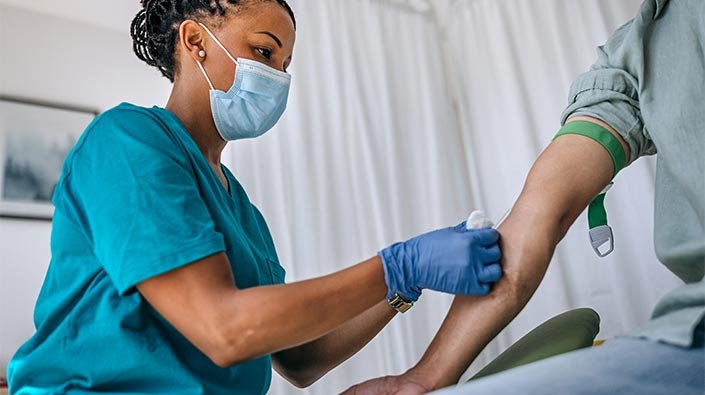Emergency Response Protocols in Phlebotomy Procedures: Ensuring Safety and Efficiency in Hospital Supply and Equipment Management
Summary
- Having clear protocols in place for emergency response during phlebotomy procedures is crucial in hospital supply and equipment management.
- Effective communication and coordination among healthcare staff are essential for ensuring a timely and efficient response to any emergencies that may arise during phlebotomy procedures.
- Regular training and drills should be conducted to ensure that healthcare staff are well-prepared to handle emergency situations during phlebotomy procedures.
Introduction
In hospital supply and equipment management, ensuring the safety and well-being of patients undergoing phlebotomy procedures is of utmost importance. Phlebotomy, which involves the drawing of blood for diagnostic testing or donation, can sometimes lead to emergencies such as fainting, Allergic Reactions, or Excessive Bleeding. Therefore, it is essential to have protocols in place to ensure efficient and effective emergency response during phlebotomy procedures.
Effective Communication Protocols
Effective communication is key to a successful emergency response during phlebotomy procedures. Healthcare staff involved in phlebotomy should be trained to communicate clearly and effectively with each other in case of emergencies. Some important communication protocols that should be in place include:
1. Code Blue Procedures
- Designation of a specific code to indicate an emergency situation during phlebotomy procedures.
- Clear instructions on how to activate a code blue and who should be contacted in case of an emergency.
- Regular drills to ensure that all healthcare staff are familiar with code blue procedures and know how to respond.
2. Emergency Contact Information
- Ensuring that all healthcare staff involved in phlebotomy procedures have access to emergency contact information for each patient, including next of kin and primary care physician.
- Clear guidelines on who to contact within the hospital in case of an emergency, such as the charge nurse or attending physician.
- Establishing a communication protocol for contacting emergency services if needed, such as calling 911.
Coordination of Emergency Response
In addition to effective communication protocols, coordination among healthcare staff is essential for ensuring a timely and efficient response to emergencies during phlebotomy procedures. Some key steps for coordinating emergency response include:
1. Designation of Roles and Responsibilities
- Clear designation of roles and responsibilities for healthcare staff involved in phlebotomy procedures, including who will take the lead in case of an emergency.
- Training all staff on their specific roles and responsibilities during emergency situations, such as who will provide first aid or call for help.
2. Teamwork and Collaboration
- Promoting a culture of teamwork and collaboration among healthcare staff to ensure a coordinated response to emergencies during phlebotomy procedures.
- Encouraging open communication and sharing of information among team members to facilitate a quick and effective response to emergencies.
Training and Preparedness
Regular training and preparedness are essential for ensuring that healthcare staff are well-equipped to handle emergency situations during phlebotomy procedures. Some important steps to ensure training and preparedness include:
1. Emergency Response Drills
- Conducting regular emergency response drills to simulate different scenarios that may arise during phlebotomy procedures, such as fainting or Allergic Reactions.
- Providing feedback and debriefing after each drill to identify areas for improvement and enhance preparedness for future emergencies.
2. Continuing Education and Training
- Offering Continuing Education and Training Opportunities for healthcare staff involved in phlebotomy procedures to refresh their knowledge and skills in emergency response.
- Providing access to resources such as online courses or workshops on phlebotomy safety and emergency protocols.
Conclusion
Effective emergency response protocols are crucial for ensuring the safety and well-being of patients undergoing phlebotomy procedures in hospital supply and equipment management. By implementing clear communication protocols, coordinating emergency response efforts, and providing regular training and preparedness activities, healthcare facilities can enhance their ability to respond efficiently and effectively to emergencies during phlebotomy procedures.

Disclaimer: The content provided on this blog is for informational purposes only, reflecting the personal opinions and insights of the author(s) on the topics. The information provided should not be used for diagnosing or treating a health problem or disease, and those seeking personal medical advice should consult with a licensed physician. Always seek the advice of your doctor or other qualified health provider regarding a medical condition. Never disregard professional medical advice or delay in seeking it because of something you have read on this website. If you think you may have a medical emergency, call 911 or go to the nearest emergency room immediately. No physician-patient relationship is created by this web site or its use. No contributors to this web site make any representations, express or implied, with respect to the information provided herein or to its use. While we strive to share accurate and up-to-date information, we cannot guarantee the completeness, reliability, or accuracy of the content. The blog may also include links to external websites and resources for the convenience of our readers. Please note that linking to other sites does not imply endorsement of their content, practices, or services by us. Readers should use their discretion and judgment while exploring any external links and resources mentioned on this blog.

